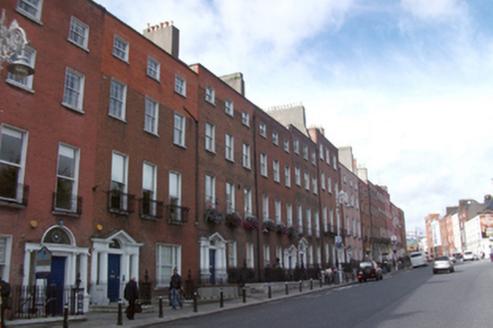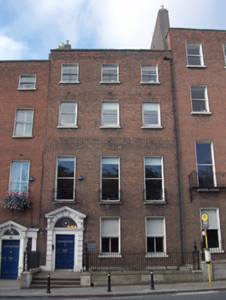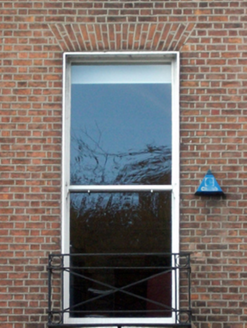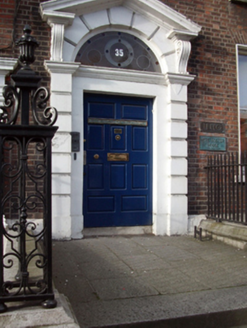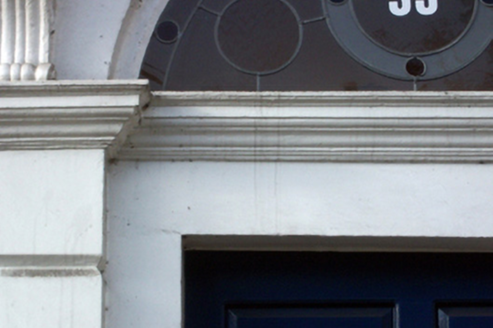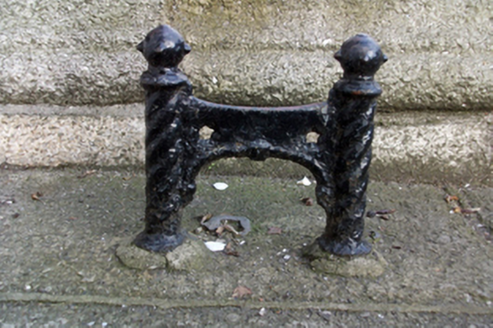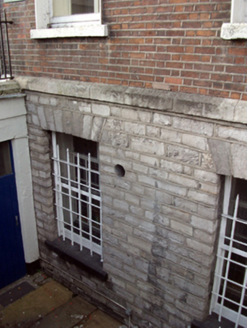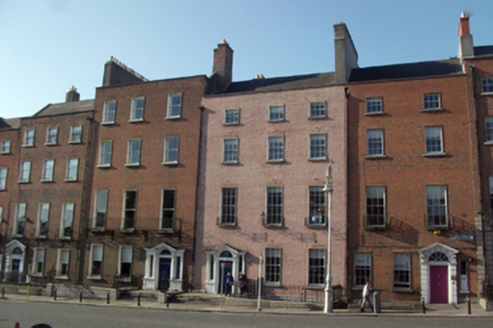Survey Data
Reg No
50010644
Rating
Regional
Categories of Special Interest
Architectural, Artistic
Original Use
House
In Use As
Office
Date
1755 - 1765
Coordinates
315562, 235038
Date Recorded
29/09/2011
Date Updated
--/--/--
Description
Terraced three-bay four-storey house over exposed basement, built c.1760. Now in use as offices. Pitched slate roof with clay ridge tiles behind rebuilt parapet wall with square granite ashlar coping. Rendered chimneystacks and cast-iron rainwater goods. Flemish bond red brick walls with second and third floors rebuilt. Granite plinth course over coursed granite ashlar walls to basement level. Yellow brick walls to rear elevation. Bronze plaque reading, 'I.N.T.O.' and copper plaque reading, 'Vere Foster House' to ground floor. Gauged red brick flat-arched window openings with rendered reveals and granite sills to upper floors, having replacement one-over-one pane timber sliding sash windows to basement, ground and first floors. Replacement uPVC windows to upper two floors. Cast-iron balconettes to first and third floors. Dressed granite surrounds and gauged granite voussoirs to basement window openings, with wrought-iron window guards. Granite lintels to third floor windows to rear elevation. Round-headed door opening within painted stone doorcase having rusticated pilasters on plinth blocks, stepped cornice and scroll-work brackets with open-bed pediment over, housing replacement stained-glass fanlight with rusticated surround. Replacement timber door with brass plate and door fittings. Door opens onto granite flagged platform with barley twist cast-iron bootscraper and granite stepped approach bridging basement area. Approach flanked by wrought-iron railings with boxed corner posts on replacement granite plinth.
Appraisal
Located on historic Parnell Square, this finely-proportioned townhouse with its well-balanced façade is an integral component of the streetscape. Built by Robert Ball, along with Nos. 32-34, it is now in use as the offices of the Irish National School Teacher's Association, as are Nos. 33 and 34. The retention of historic features such as the original rusticated doorcase, balconettes, and coursed granite details to the basement help maintain the building's early aspect and contribute to its architectural importance. The use of timber sash windows enhances the building, as does the foreground detailing of stone plinth wall, iron railings and steps to the entrance. The interior is said to retain fine Empire-style mahogany doors between the ground floor rooms, in addition to original joinery and cornices. Parnell Square was the creation of Dr Bartholomew Mosse who, in 1748, leased four acres at the junction of three important sites: the Gardiner Estate, Sackville (now O’Connell) and Great Britain (now Parnell) Streets. There the New Gardens (now the Garden of Remembrance) were constructed, a landscaped tract of land with illuminated paths, obelisks and a loggia. Entrance fees to the gardens funded the construction of the Rotunda Hospital to the south, Mosse’s life ambition, and the success of the gardens precipitated the development of the surrounding square, largely by the hospital's chief builders.
